
| Publisher: | University of Texas Press | |
| Genre: | General, Fiction | |
| ISBN: | 9781477317778 | |
| Pub Date: | January 2019 | |
| Price: | $19.95 |
| Starred | Fiction |
by David Toscana, trans. by David William Foster
Early in Mexican author David Toscana's The Enlightened Army, a friend of the protagonist Ignacio Matus asks him to "just promise me that this adventure is for the fatherland, and not revenge for the medal the gringos stole from you." Matus, a history teacher, still grieves the outcome of the Mexican-American War--in 1848--and his "adventure" is to lead a group of pubescent students from Mexico into Texas to reconquer the Alamo. The medal refers to an Olympic bronze that Matus believes he deserved--he staged his own race simultaneously with the one held in Paris in 1928 and achieved a time faster than the gringo who placed third.
Initially, in this highly entertaining farce, Matus does not intend to recruit schoolchildren, but then he is fired for being overly patriotic and fails in his attempt to raise an army of loyal citizens from Monterrey. A boy who lives with him continues his cause and finds support among the highly imaginative and overly romantic students from the institute the boy attends.
"Ubaldo [a student soldier] says he was fascinated by the priest's story about the body that dies and releases an invisible puff of smoke that flies up to a place of blue clouds and happy faces where it will live forever. Didn't you see he was serious? That priest needs to be sent to the institute." Toscana's recounting of the army's journey ably mocks the delusions of nationalism, egotism and religion that so often lead humans to folly. --Evan M. Anderson, collection development librarian, Kirkendall Public Library, Ankeny, Iowa
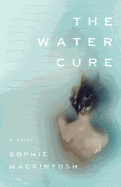
| Publisher: | Doubleday | |
| Genre: | Psychological, Dystopian, Coming of Age, Fiction | |
| ISBN: | 9780385543873 | |
| Pub Date: | January 2019 | |
| Price: | $25.95 |
| Fiction |
by Sophie Mackintosh
The Water Cure is a dream-like study of sisterhood, patriarchal norms and what it means to be a woman. Three sisters live in an island compound protected by barbed wire and traps, forced to undergo bizarre acts of self-punishment and denial by their parents in the name of staying healthy. But when their father disappears and three strange men arrive at their door, the small world constructed for the women begins to burst open. Sophie Mackintosh's debut is built like one of the family's traps, turned tight in the opening pages and ready to spring.
Grace, Lia and Sky have grown up knowing little other than the world their parents built for them: daily rituals intended to keep outside contamination at bay, a sheltered existence and the ever-present fear of men other than their father, King. As a result, the strange appearance of the men, claiming to be shipwrecked, forces each young woman to rethink the rules and culture of the compound.
In different hands, The Water Cure might have been a thriller, a twisting cat-and-mouse game where the sisters and their guests continually gain and lose the upper hand. But Mackintosh is more interested in how Grace and Lia perceive masculinity, how it toxifies their relationship and lives. The novel ultimately ends in a show of how powerful the wills of the three sisters are. Fans of haunting works that probe identity will find a lot to love in its pages, as will anyone who likes stories that deconstruct notions of gender and power. --Noah Cruickshank, adult engagement manager, the Field Museum, Chicago, Ill.

| Publisher: | Viking | |
| Genre: | General, Coming of Age, Fiction, Historical, Jewish | |
| ISBN: | 9780399162589 | |
| Pub Date: | January 2019 | |
| Price: | $26 |
| Fiction |
by David R. Gillham
What if Anne Frank had survived the camps? The world knows her as the bright, curious young girl whose diary gave voice to the experience of Jews in hiding during World War II. But if Anne had lived beyond the horrors of Bergen-Belsen, her story would necessarily be more complicated. With compassion and rich historical detail, David R. Gillham (City of Women) imagines Anne's next chapter in his second novel, Annelies.
Gillham opens his narrative in 1942, as the Franks prepare to go into hiding. Those familiar with Anne's story will recognize the main characters: Margot, the sober, sensible older sister; Miep Gies, the trusted office confidante; and those who joined them in the Secret Annex: the van Pels family and Herr Pfeffer, the dentist. Gillham vividly renders Anne as a restless, ambitious young teenager, at once acutely aware of every small change in her daily life and almost completely ignorant of the larger implications of Nazi occupation.
The novel takes readers through the Franks' years in hiding and into the camps, then to postwar Amsterdam, where Anne--reunited with her father and Miep, but deeply traumatized by her wartime experiences--struggles to make sense of a world she barely recognizes. Gillham's narration brings Anne to complex life. She emerges as a young woman struggling with everyday desires, fears and ambitions, while grappling with unbelievable trauma and deep anger. Annelies is a deeply moving portrait of the woman Anne Frank might have become, and a powerful meditation on loss, humanity and the possibility of redemption. --Katie Noah Gibson, blogger at Cakes, Tea and Dreams
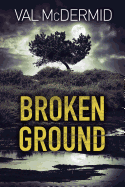
| Publisher: | Atlantic Monthly Press | |
| Genre: | Mystery & Detective, General, Fiction | |
| ISBN: | 9780802129123 | |
| Pub Date: | December 2018 | |
| Price: | $26 |
| Mystery & Thriller |
by Val McDermid
Val McDermid (The Mermaids Singing; Insidious Intent) captures the dour vibe of Scotland perfectly in Broken Ground, an engrossing entry in her Detective Karen Pirie series. DCI Pirie, head of the cold case team, is called in when treasure hunters find more than they were bargaining for in a bog. Alice Somerville's grandfather always said he buried two valuable motorcycles at the end of World War II, as Allied forces were being shipped back home. But Alice and her husband end up finding a dead body with the motorcycles.
Driving back and forth to the remote Scottish highlands and trying to determine exactly when the body was placed with the motorcycles is keeping Pirie busy enough. But then she's pulled into another case, after overhearing a sinister conversation in a coffee shop. Twisty and shocking, the effects of the conversation immerse Pirie in the world of modern crime for a change, and set her on a collision course with higher-ups within the Scotland police force.
Fans of Ian Rankin or Elizabeth George will love Broken Ground. It's atmospheric, tense and believably weaves together two disparate cases. Pirie herself, struggling with insomnia in the wake of a personal tragedy, is smart, stubborn and an eminently likable character as she endeavors to solve the crimes and save her own skin within the police force. --Jessica Howard, bookseller at Bookmans, Tucson, Ariz.
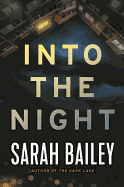
| Publisher: | Grand Central | |
| Genre: | Family Life, Mystery & Detective, Crime, Romance, General, Suspense, Thrillers, Fiction, Women Sleuths | |
| ISBN: | 9781538759950 | |
| Pub Date: | December 2018 | |
| Price: | $26 |
| Mystery & Thriller |
by Sarah Bailey
Into the Night, Sarah Bailey's follow-up to her debut novel, The Dark Lake, rejoins Detective Sergeant Gemma Woodstock after her life has fallen apart. She's divorced, and her son lives with her ex, so she has moved to Melbourne, where she is now a small fish in a big pond. Her new partner, Nick Fleet, has little charm or professionalism, and her new boss doesn't yet trust her instincts or abilities. When rising star Sterling Wade is murdered on a film set, however, Gemma is sucked into another life-consuming case that distracts her from her personal failings. But is his death as disconnected from her own life as she thinks? And what could it possibly have to do with the homeless man murdered just a day before?
With a seemingly endless cast of potential suspects, Bailey excels at keeping the reader guessing through every turn in the plot. Rather than The Dark Lake's insistence that none of the characters could do such a thing, Into the Night seems to suggest that nearly everyone could have, or did. While the plot is fast-paced and engrossing, it is Gemma herself who allows this workplace thriller to feel fresh. A female reboot of the hardboiled detective, Gemma is both brilliant and haunted, addicted to sex rather than drugs, and frequently stunted by her naïveté despite her experience. Bailey crafts these character tensions with such precision and depth that the reader is left to wonder what the difference between a dazzling hero and a down-and-out workaholic really is. --Alice Martin, freelance writer and editor
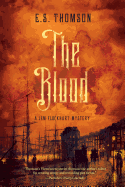
| Publisher: | Pegasus Books | |
| Genre: | International Mystery & Crime, Mystery & Detective, Amateur Sleuth, Fiction, Historical | |
| ISBN: | 9781681778754 | |
| Pub Date: | December 2018 | |
| Price: | $25.95 |
| Mystery & Thriller |
by E.S. Thomson
The Blood, the third in E.S. Thomson's Jem Flockhart mystery series (Beloved Poison, Dark Asylum), rejoins Jem and her begrudgingly platonic companion, Will, as they investigate a seaborne hospital colloquially called The Blood. Drawn there by a desperate letter from an old friend, Jem can immediately tell something onboard the ship is amiss. But after both her friend's body and the body of a local sex worker are discovered nearby, the duo must determine which of the ambitious, cruel doctors aboard the ship was involved and why more young women start to show up dead. Meanwhile, Jem is determined to discover what happened to her long-lost lover, by any means necessary.
From its grime-crusted back alleys to its blood-spattered operating tables, The Blood emanates atmospheric appeal. Victorian England, in all its smog, lace and polluted waters, is compellingly conjured in every sentence, giving the setting not only a historical bent, but a macabre horror aesthetic as well. Meanwhile, Jem, who seems to pace the pages with flurried intellect as well as desperation, is a refreshing twist on the Sherlock Holmes archetype. Disguised as a man to get ahead in her career and seeking her long-lost love, Jem provides the otherwise plot-driven book's contemplative moments that strengthen larger themes of gender, power and ambition. At the heart of it all is Thomson's keen insight into the equally fascinating and nauseating medical history of the period. Under such guidance, the London of The Blood becomes a gaseous, bloated body, split open by a master surgeon for dissection. --Alice Martin, freelance writer and editor

| Publisher: | W.W. Norton | |
| Genre: | Biography & Autobiography, United States, 20th Century, Artists, Architects, Photographers, History, State & Local - South | |
| ISBN: | 9780393247923 | |
| Pub Date: | January 2019 | |
| Price: | $27.95 |
| Starred | Biography & Memoir |
by Preston Lauterbach
Delving into the life of Memphis photographer Ernest Withers, popular historian Preston Lauterbach (Beale Street Dynasty) offers readers a new vantage point on a pivotal time in United States history. Withers began his informal training in photography as a teenager. In the army, he received a formal education in the art and its related technology as part of his basic training. And when he deployed to the South Pacific during World War II, Withers picked up a side gig taking pictures for soldiers to send home to their sweethearts and parents.
He later served a short stint as one of the first African American police officers in Memphis, but fate intended him to be behind the lens of a camera. He photographed rhythm and blues musicians like Ruth Brown, B.B. King and Ray Charles, as well as a then-unknown young white man by the name of Elvis Presley. Withers defied a judge and snapped the now iconic image of Mose Wright identifying J.W. Milam while seated in the courtroom during the Emmett Till murder trial. Following the Montgomery boycott, he rode an integrated bus with a young Martin Luther King, Jr., photographing him with Ralph Abernathy.
Through a deep dive into the events of this period, Lauterbach evaluates the complexity of Withers--the conservative veteran who felt allegiance to his country; the photojournalist who functioned as a confidential informant for the FBI.
Withers's credo was "The Pictures Tell the Story," and Lauterbach allows them to tell as much of the photographer's story as possible. He fills in the remainder with stellar narrative skills. His fastidious research, storytelling expertise and passion for the subject make Bluff City an engrossing, fascinating biography that reads like an espionage thriller. --Jen Forbus, freelancer
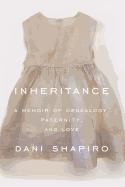
| Publisher: | Knopf | |
| Genre: | Biography & Autobiography, Literary Figures, Personal Memoirs, General, Cultural, Ethnic & Regional | |
| ISBN: | 9781524732714 | |
| Pub Date: | January 2019 | |
| Price: | $24.95 |
| Biography & Memoir |
by Dani Shapiro
Through nine books, Dani Shapiro has mined her own experiences, trying to find meaning in events that have shaped her life. Shapiro's ongoing literary narrative continues with Inheritance, an unflinching, deeply personal account of how a DNA ancestry test irrevocably altered her life and the familiarity therein. The shocking results forced Shapiro to question her identity and everything she believed about herself and her family history over 54 years of living.
Shapiro grew up an observant Orthodox Jew shaped by her parents and a large "dynastic clan" in New Jersey. Religion and her spiritual life became the bedrock of her existence until she ultimately rebelled, breaking with Judaism while in college. When Shapiro was in her 20s, a catastrophic car accident claimed the life of her father, whom she deeply loved and respected. It also left her mother afflicted by years of related injuries until her death. Shapiro eventually reconnected with the traditions of her Jewish heritage after she became a mother herself.
Several years ago, Shapiro decided on a lark to have her DNA analyzed. The report ultimately revealed a life-altering truth: Shapiro's father was not her biological parent. Relentless in her tenacity, she goes in search of the man who was. She grapples with the secrecy of her parents and the meaning of family while seeking to reconcile the consequences of this revelation.
Shapiro (Hourglass) is always an intellectual, analytical storyteller. The engaging way in which she renders the suspenseful details of this forthright, meaningful odyssey will keep readers totally enthralled. --Kathleen Gerard, blogger at Reading Between the Lines
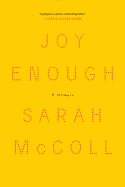
| Publisher: | Liveright | |
| Genre: | Biography & Autobiography, Women, Family & Relationships, Parenting, Death, Grief, Bereavement, Personal Memoirs, Motherhood | |
| ISBN: | 9781631494703 | |
| Pub Date: | January 2019 | |
| Price: | $21.95 |
| Biography & Memoir |
by Sarah McColl
"I loved my mother, and she died. Is that a story?" Essayist Sarah McColl begins her memoir Joy Enough with that question. In a spare, nonlinear narrative, McColl explores the intertwined narratives of her own life story and that of her mother, Allison. She charts the passionate romances that led them both to unhappy marriages, shares anecdotes of the four boisterous children Allison raised and highlights their shared commitment to seeking out everyday pleasures. For McColl, her mother's example was both frustrating and true, at once a pattern to rebel against and an undeniable north star.
The book's timeline shifts between Allison's college days and McColl's childhood, from their family's roots in western Massachusetts to Texas suburbs and McColl's 20-something life in Brooklyn. Both before and after Allison falls ill, McColl asks many of the same questions her mother asked: What does it mean to be a woman in the world? How much should duty dominate a life, and what role can pleasure play? What happens when the people who formed our foundations leave us? And is it still possible to find joy?
As she faces her mother's life-threatening illness plus her own personal and professional upheaval, McColl takes refuge in small sensory acts: cooking a dry-aged steak, building a fire in a wood stove. She does not arrive at answers to her questions, but eventually she learns, like her mother, to "[swim] against her own sadness." The effect is luminous. --Katie Noah Gibson, blogger at Cakes, Tea and Dreams
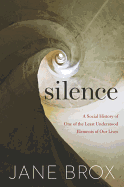
| Publisher: | Houghton Mifflin Harcourt | |
| Genre: | Monasticism, United States, Europe, Religion, 20th Century, History, Social Science, Modern, Great Britain - General, Sociology, State & Local - New England, General, Women's Studies, State & Local - Middle Atlantic, Criminology | |
| ISBN: | 9780544702486 | |
| Pub Date: | January 2019 | |
| Price: | $27 |
| Social Science |
by Jane Brox
For some of us, silence is a state we strive to reach--an escape from the noise of the modern world and an opportunity for contemplation. For others, silence is something we avoid, preferring activity and distraction to being alone with our thoughts. Both are manifestations of how silence has been viewed through history: either a way to achieve enlightenment or a means to instill punishment.
In Silence, Jane Brox (Brilliant: The Evolution of Artificial Light) considers how silence and solitude can be a source of "growth and despair" through a dual history of the penitentiary and the monastery. Benjamin Rush, a social reformer and signer of the Declaration of Independence, was perhaps America's earliest criminal justice reformer. Rush sought to "replace the hangings, brandings, and whippings of its colonial past" with redemptive "silent and separate" incarceration rooted in Quaker ideology. Over time, this would give way to solitary confinement as the ultimate punishment for a prisoner, using sound as a menace rather than a comfort. Brox also reflects on the power of monastic silence for those with a religious calling. Unlike the penitentiary, silence in the monastery is communal, sacred and infused with rituals. Every sound, no matter how simple, like the clanging of a bell, is imbued with meaning because it is intentional.
Through two figures--Charles Williams, an African American farmer who was the first prisoner at Philadelphia's Eastern State Penitentiary, and Thomas Merton, the Trappist monk whose renowned autobiography The Seven Storey Mountain detailed, then interrupted, his life of solitude--Brox illustrates the dual perspectives of silence as a source of peace or penance. --Frank Brasile, librarian
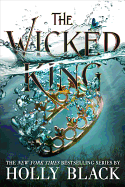
| Publisher: | Little, Brown | |
| Genre: | Bullying, Fantasy, General, Social Themes, Young Adult Fiction, Action & Adventure | |
| ISBN: | 9780316310352 | |
| Pub Date: | January 2019 | |
| Price: | $19.99 |
| Starred | Children's & Young Adult |
by Holly Black
In The Cruel Prince, human Jude used her place among fey royalty and her training as a knight to install a puppet monarch on the throne. Doing so meant working closely with her bitter rival, the hateful Prince Cardan, but allowed her to keep her murderous adoptive father, Madoc, off the throne, and her young, fey brother, Oak, safe from the court.
The Wicked King sees Jude playing the part of seneschal to High King Cardan, though, in truth, she is "the hand behind the throne." She's tricked Cardan into swearing allegiance to her "for a year and a day," but Jude wants to "keep him in [her] power--and out of trouble--for longer than that." Her plan is to crown Oak who, unbeknownst to most, is a child of the previous High King and therefore "of the right bloodline." But before he can take over for this new (and supposedly temporary) High King, he has to grow up. Unfortunately, Cardan, who never wanted the crown, looks increasingly comfortable playing monarch. Meanwhile, Orlagh, Queen of the Undersea, plots to unseat the seemingly "feckless" Cardan, and Jude juggles different court factions to maintain power.
To complicate matters further, Jude and Cardan become romantically involved, sharing the "sinister pleasure" of ill-conceived desire. Jude begins to get swept away in all of her escalating games of love and hate; stakes rise as her ability to lie, and her growing affinity for murder, may well lead to her downfall. The Wicked King has satisfying twists and turns, sizzling passions, brutal violence, spies and revels of all sorts--no one brings the intricate courtly politics of Faerie to life quite as well, or with as much intelligence, as Holly Black. --Lynn Becker, blogger and host of Book Talk, a monthly online discussion of children's books for SCBWI

| Publisher: | Candlewick | |
| Genre: | People & Places, Emigration & Immigration, Young Adult Nonfiction, Social Topics, Politics & Government, United States - General | |
| ISBN: | 9780763678845 | |
| Pub Date: | January 2019 | |
| Price: | $19.99 |
| Children's & Young Adult |
by Susan Kuklin, editor
Susan Kuklin set out to give voice to the silent in We Are Here to Stay. Nine young adults registered in the United States' Deferred Action for Childhood Arrivals (DACA) program narrate the book; the idea for the work was to have them come out of the immigration shadows as flesh-and-blood individuals, rather than statistics or ambiguous generalizations. However, the book's original planned publication date collided with the federal government's repeal of DACA, and its existence became a threat to the subjects' safety. Still, the young people wanted their stories told. Originally, the format included full-color portraits, but those pages now appear as blank frames with only initials representing the immigrants' names. The stories, however, remain unchanged.
Coming as mere children from Korea, Independent Samoa, Colombia, Ghana and Mexico, these brave young men and women share experiences of fleeing to escape violence and poverty, to pursue a chance at education and their dreams. Their struggles are heartbreaking, their fortitude extraordinary. Kuklin transcribes the stories as spoken by their owners, which serves to bolster their authenticity and the humanity. Their powerful narratives reinforce one immigrant's words: "Being undocumented doesn't define me. I don't want documents... to be my signifier. Ultimately, I'm just a person." And the missing images speak volumes about the way society views these youths. Chilling, inspiring and hopeful, We Are Here to Stay transcends politics and finds the common bonds of mankind. --Jen Forbus, freelancer
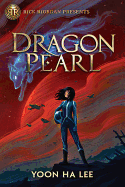
| Publisher: | Rick Riordon Presents/Disney-Hyperion | |
| Genre: | Fantasy & Magic, Legends, Myths, Fables, Asian, Juvenile Fiction, Action & Adventure, Science Fiction | |
| ISBN: | 9781368013352 | |
| Pub Date: | January 2019 | |
| Price: | $16.99 |
| Children's & Young Adult |
by Yoon Ha Lee
A fox spirit ("gumiho") masquerading as a human, 13-year-old Min has a dismal life on Jinju, a poor, half-finished planet in the Thousand Worlds league. Her mom and aunties bog her down with mundane chores, and it's unsafe for her to practice her fox magic openly--her ancestors used their shape-shifting abilities to "lure lonely travelers" and "suck out their lives," so people aren't too keen on fox spirits. The only thought getting her through this life is that in two years she can take the entrance exam for the Space Forces, an elite, interstellar military order, and follow her brother, Jun, into the service.
Then, her family receives word that Jun has been accused of deserting his training cruise to search for the Dragon Pearl, "a mystical orb with the ability to... transform"--or destroy--"an entire planet in a day." Min won't allow her brother's reputation to be ruined; she runs away to find Jun and clear his name. She quickly realizes that the situation is more complicated than it appears and the fate of the whole league may rest in her inexperienced hands.
In Dragon Pearl, Yoon Ha Lee (the Machineries of Empire series) melds elements of Korean myth, science fiction and adventure stories into a strong, cohesive narrative that fans of multiple genres will enjoy. Rigged gambling parlors, pirate attacks and battle simulations are layered over conjuring goblins, weather-controlling dragons and vengeful ghosts. Lee's epic romp through space also includes discussions about prejudice, nonbinary identity and inequality between rich and poor. Lee handles these topics sensitively without burdening the audience. Dragon Pearl shoots for the moon and lands flawlessly, delivering a rollicking and meaningful space adventure. --Lana Barnes, freelance reviewer and proofreader